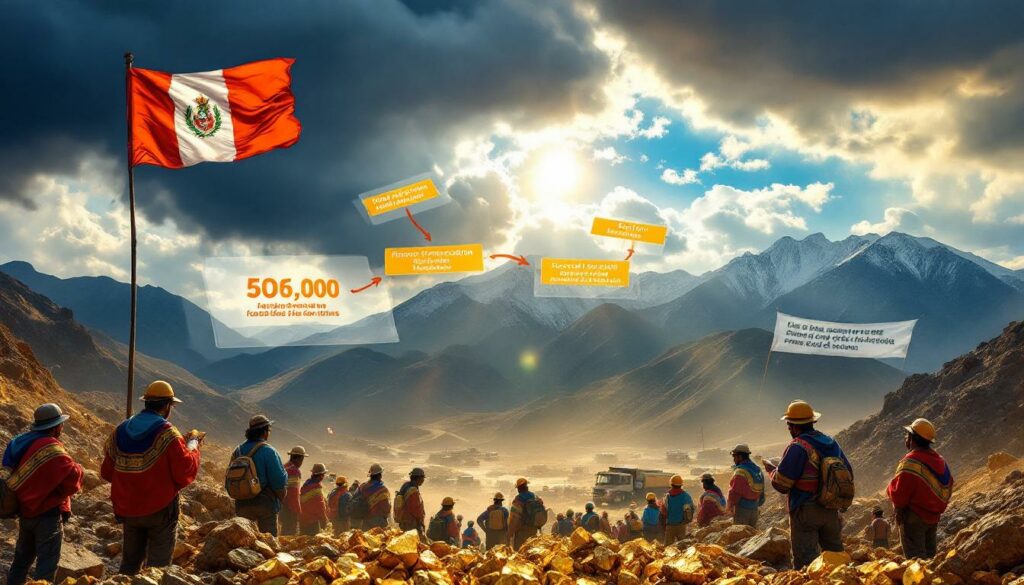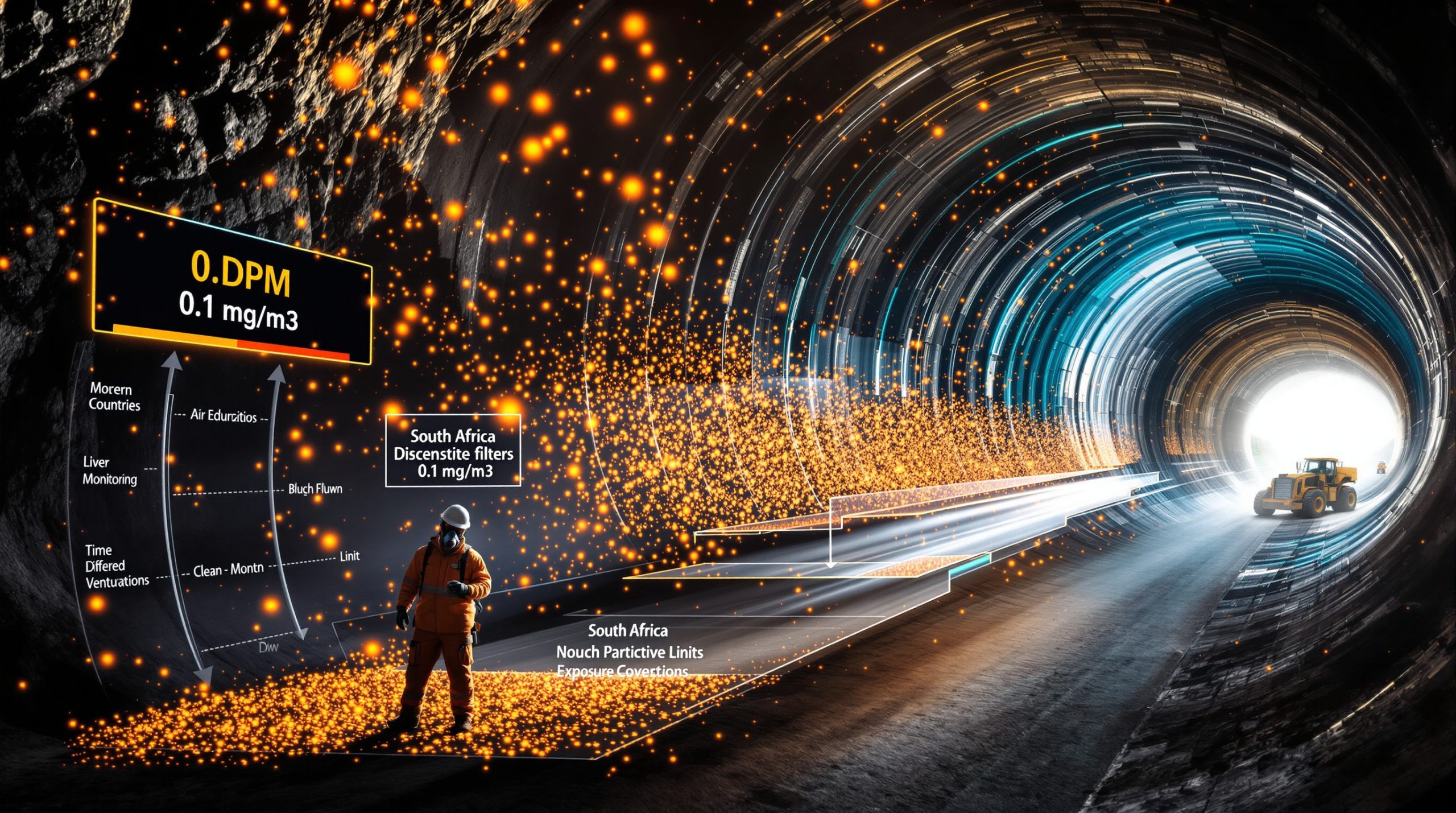Why Are Peruvian Informal Miners Suspending Negotiations with the Government?
Recent developments in Peru's mining sector have created significant tension as peruvian informal miners suspend talks with government officials. The breakdown in negotiations highlights deeper issues within Peru's complex resource governance framework and threatens to disrupt the nation's vital mining economy.
The Breaking Point in Formalization Talks
The negotiations between the CONFEMIN miners' union and Peruvian authorities reached a critical impasse over explosives regulations that miners consider impossible to implement within the given timeframe. According to CONFEMIN union leader Maximo Franco Bequer, the government has "refused to alter an August 17 deadline for miners to move explosives into formal 'powder magazines'" – a requirement that has become the breaking point in ongoing formalization efforts.
"We cannot continue talking when they refuse to listen to our most basic concerns," Bequer stated during the announcement of the suspension of talks.
Approximately 20,000 miners face exclusion from the formalization program due to their inability to meet the powder magazine requirement by the August deadline. For many small-scale operations, constructing these specialized explosive storage facilities represents an insurmountable financial and logistical challenge.
The dispute centers on what miners describe as overly burdensome regulations that fail to account for the economic realities and operational constraints of small-scale mining operations across Peru's mineral-rich regions.
Recent History of the Mining Dispute
This latest breakdown in negotiations follows a pattern of escalating tensions between informal miners and government authorities. Miners had previously suspended a two-week protest on July 15, 2025, conditionally returning to negotiations with the expectation of more flexible implementation timelines.
During those protests, miners strategically blocked a critical copper transit route, significantly impacting major mining permits guide operations throughout the region. Companies affected by the blockade included international mining firms MMG, Glencore, and Hudbay – demonstrating the informal miners' ability to leverage their geographic position to disrupt Peru's formal mining sector.
The temporary suspension of protests was explicitly conditional on productive government negotiations, a condition miners now claim has been violated by the government's inflexible stance on regulatory deadlines.
"We suspended our actions in good faith, but the government has not shown the same willingness to find workable solutions," explained a CONFEMIN representative.
What Are the Core Issues Facing Peru's Informal Mining Sector?
Peru's informal mining sector exists in a complex regulatory gray area, operating with temporary permits under a program created over a decade ago that was originally intended as a transitional measure. The current tensions reflect fundamental disagreements about how to bring these operations into the formal economy without destroying livelihoods.
The Formalization Program Challenges
Peru's mining formalization program was established with the goal of gradually bringing informal miners into the regulated economy while improving safety and environmental standards. Currently, thousands of miners operate under temporary permits that provide limited legal protections and operational security.
The government aims to end this temporary program in favor of stricter regulations that would enforce formal safety, environmental, and operational standards across all mining activities. However, miners argue that the formalization requirements are financially and logistically impossible to meet within the current timeframe.
The powder magazine requirement represents just one of several contested regulations that informal miners claim create insurmountable barriers to formalization. Other requirements include environmental impact assessments, formal land titling, and technical operating plans that require substantial capital investment and specialized expertise.
"The current approach to formalization asks us to transform overnight into operations that took major companies decades to develop," noted one regional mining representative from Cusco.
Economic and Social Stakes
The formalization dispute threatens the livelihoods of tens of thousands of miners and their families, particularly in regions where alternative economic opportunities remain limited. Many informal operations lack the capital resources to upgrade their facilities to meet regulatory standards while maintaining operational viability.
The sector represents a significant portion of Peru's mining economy, particularly in gold extraction where informal miners contribute substantially to national production figures. Regulatory changes could impact national mineral exploration importance and export figures if large numbers of operations are forced to close.
Communities in the Cusco region have become particularly dependent on informal mining for economic survival, with mining activities supporting not only direct mining jobs but also transportation services, equipment suppliers, and local commerce. The sudden enforcement of strict regulations without adequate transition support risks creating economic hardship throughout these mining-dependent communities.
How Does This Dispute Impact Peru's Mining Industry?
The conflict between informal miners and the government creates ripple effects throughout Peru's broader mining sector, affecting global supply chains and adding uncertainty to an industry already facing significant challenges.
Effects on Major Mining Operations
Previous blockades organized by informal miners demonstrated their ability to disrupt supply chains for formal mining companies operating in Peru. Copper transport routes are particularly vulnerable to protest actions, as they often traverse regions with significant informal mining activity.
International mining companies including MMG, Glencore, and Hudbay face production uncertainties during periods of mining unrest, potentially affecting their ability to fulfill supply contracts and maintain operational efficiency. The dispute adds another layer of complexity to Peru's already challenging mining environment, which has faced political instability and regulatory uncertainty in recent years.
Potential production losses from renewed protests could affect global copper production if demonstrations resume and persist, particularly given Peru's position as one of the world's largest copper producers. The timing is especially sensitive as copper demand trends continue to increase due to growing requirements for electrical infrastructure and renewable energy technologies.
"Any disruption to Peru's copper supply chain has implications far beyond local markets," explained a mining sector analyst tracking the situation.
Broader Implications for Peru's Resource Governance
The conflict highlights persistent tensions between formalization goals and economic realities in resource-rich developing economies. The Peruvian government faces competing pressures to improve regulation and safety standards while maintaining mineral production levels that support national economic growth.
Environmental concerns related to informal mining practices compete with socioeconomic considerations in policy decisions, creating difficult trade-offs for policymakers. Unregulated mining activities can cause significant environmental damage, including mercury contamination and deforestation, yet overly restrictive regulations may simply drive operations further underground.
The dispute represents a test case for Peru's mining governance framework and its ability to balance competing interests while creating pathways for sustainable mineral beneficiation insights. How authorities resolve this standoff could set important precedents for handling similar conflicts in other regions and resource sectors.
What Happens Next in the Mining Standoff?
With negotiations suspended and the August 17 deadline approaching rapidly, both miners and government officials face increasing pressure to find a resolution that prevents economic disruption while advancing regulatory goals.
Potential for Renewed Protests
CONFEMIN leadership has announced plans to meet and decide on new protest actions in response to the breakdown in negotiations. According to Bequer, "The union expects to meet in the coming hours to decide on new protests," signaling the possibility of imminent disruptions.
Previous blockades targeted strategic transportation routes for maximum economic impact with minimal resources, a tactic that proved effective in bringing government officials to the negotiating table. Renewed protests could quickly affect copper production and transportation if they follow similar patterns.
The Cusco region remains a potential flashpoint for mining-related unrest, with its concentration of informal operations and strategic position along key mineral transportation corridors. Government security forces face the challenge of responding to potential blockades without escalating tensions.
"Any resumption of blockades would immediately impact the flow of minerals from multiple major operations," noted a transportation sector analyst familiar with Peru's mining logistics.
Possible Paths to Resolution
Extension of the August 17 deadline remains the miners' primary demand, with leaders arguing that additional time is essential for developing feasible compliance strategies. A graduated implementation approach could provide a compromise, allowing operations to meet requirements in stages based on their size and resources.
Technical assistance programs might help miners meet formalization requirements more efficiently, potentially involving partnerships with established mining companies or international development organizations. Some analysts suggest that stakeholder dialogue involving mining companies could create alternative solutions that benefit from industry expertise while addressing miners' practical constraints.
International mining standards and best practices could inform a revised framework that balances safety and environmental concerns with implementation feasibility. Models from other mining nations that have successfully formalized artisanal and small-scale mining operations might provide valuable templates for Peru's approach.
"The solution likely involves recognizing different tiers of operations and creating proportional requirements," suggested a mining policy expert commenting on the situation.
FAQ: Peru's Informal Mining Crisis
What exactly are "powder magazines" and why are they controversial?
Powder magazines are specialized storage facilities for explosives used in mining operations. They must meet strict safety standards including proper ventilation, security measures, and distance from populated areas. For informal miners, constructing compliant powder magazines requires significant capital investment and technical expertise that many small operations lack.
The August 17 deadline for transferring explosives to these facilities is controversial because many miners cannot afford to build them within the timeframe. Additionally, the geographic constraints of many mining operations make it difficult to locate powder magazines at the required distance from other facilities while maintaining operational efficiency.
How significant is informal mining to Peru's economy?
Informal mining represents a substantial portion of Peru's gold production, with the sector employing tens of thousands of workers directly and supporting hundreds of thousands indirectly through related services and local economies.
In regions like Cusco, informal mining serves as a critical economic lifeline for communities with limited alternative employment opportunities. Many families have relied on these operations for generations, developing specialized skills and knowledge that may not easily transfer to other sectors.
The economic contribution extends beyond direct mineral extraction to include equipment suppliers, transporters, processors, and local businesses that serve mining communities.
What environmental concerns are associated with informal mining?
Informal mining operations often lack proper environmental controls, leading to issues including mercury contamination of waterways, deforestation, soil erosion, and habitat destruction. The government's formalization program aims partly to address these environmental impacts by bringing operations under regulatory oversight.
However, critics argue that overly stringent regulations without adequate transition support may drive operations further underground rather than improving environmental practices. Some environmental experts advocate for a staged approach that prioritizes eliminating the most harmful practices first while providing technical assistance to develop cleaner mining methods.
"The environmental challenges are real, but the solution needs to be implemented in a way that brings miners into compliance rather than criminalizing them," noted an environmental policy specialist familiar with the region.
Balancing Progress and Practicality in Mining Reform
Peru's informal mining crisis illustrates the complex challenges of resource governance in developing economies. Finding a sustainable path forward requires balancing legitimate safety and environmental concerns with economic realities and the practical constraints facing small-scale operators.
As the August 17 deadline approaches, both government officials and mining representatives face increasing pressure to develop compromise solutions that can prevent economic disruption while advancing toward improved standards. The outcome of this standoff will have significant implications not only for Peru's mining sector but also for similar formalization efforts across resource-rich nations globally.
With tens of thousands of livelihoods at stake and crucial mineral supply chains hanging in the balance, the resolution of this dispute represents a critical test of Peru's ability to manage its natural resources in a manner that serves both national development goals and the needs of mining-dependent communities.
Ready to Stay Ahead of Global Mining Developments?
Discover critical insights on mining industry trends and investment opportunities with Discovery Alert's proprietary Discovery IQ model, which transforms complex mining data into actionable intelligence for investors. Explore how major mineral discoveries can lead to significant market returns by visiting our dedicated discoveries page and position yourself ahead of the market.




